5th September 2019
Accessible & Inclusive Places MT Adventures
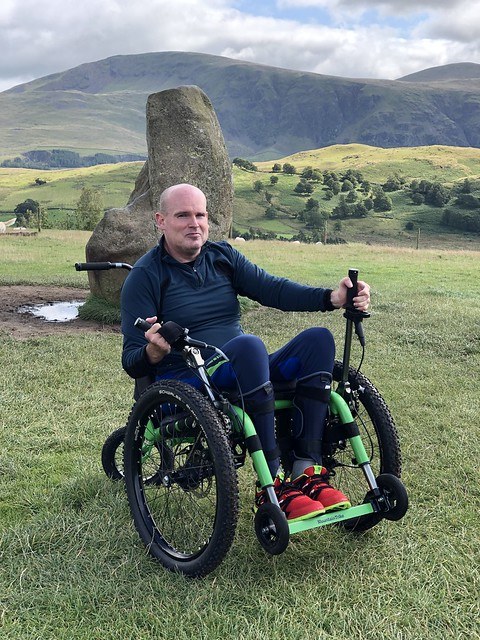
Mountain Trike owner, David Needham loves nothing more than a challenge, we have reported on his many challenges which sees him raising funds for charities close to his heart. Despite diagnosis back in 2014 of motor neurone disease (MND), David believes that by keeping active he can continue with his fight to reduce the progress of this very aggressive condition.
David, along with a group of friends, decided on a new challenge - to tackle the Old Packhorse Way - an historic trail in the Lake District which has an interesting story around its creation - In the 1560’s during the reign of Queen Elizabeth I The Lake District became a very important centre for Copper Mining and Smelting. The Men who worked these Mines and built the Smelter were German. They had the specialist knowledge and technology to firstly find copper veins, then mine those veins and then smelt the copper ore to produce copper metal. Copper was used to make coins, weapons and utensils.
Initially the Germans set up in and around Keswick. They built their smelter on the banks of The River Greta just to the East of the town. The copper ores were found locally in the Newlands Valley and Borrowdale which could be easily transported to the smelter by cart and boat. After a few decades the copper ore in these mines was becoming harder to find and extract so new copper veins were sought elsewhere. A large and valuable copper vein was found at Coniston. But this was 25 miles from the smelter at Keswick across a mountainous landscape with no roads and only very basic tracks. It was decided that the smelter had to remain at Keswick as it would have been impossibly expensive to build one at Coniston, so the copper ores from Coniston had to be transported by Packhorse.
The Packhorse Trail was created by these miners well over 400 years ago and they built stone trackways, fords and narrow bridges to aid their passage. The route climbs steeply out of The Coniston Coppermines Valley and over Hole Rake to Tilberthwaite. It then crosses the River Brathay before descending to Elterwater and climbing over Red Bank to Grasmere. It then climbs over Dunmail Raise before travelling along the Thirlmere Valley and making one final climb over Castlerigg to drop down to the smelter site at Brigham in Keswick. This would have been a tough journey for the heavily laden Packhorses and the men walking alongside them, probably taking 2 days to complete.
Today it is still possible to follow this Old Packhorse route across the mountains and along the valleys, although since the Thirlmere Valley was flooded to make a reservoir in the 1800’s, some of the old route lies underwater.
So, this is what David and his friends decided they would tackle - don’t know about you but one of the things we took when reading the account of the Old Packhorse route was that the word ‘steep’ and ‘climb’ features quite heavily!!
The date was set for the 14th and 15th August 2019 - the training began and of course the good weather was booked…!??
The route was meticioulslcy planned and broken down into 6 stages, however due to bad weather (which clearly hadn’t been booked properly!) on day one, the route was slightly altered - which upped the distance overall from 24 miles to 26 miles!
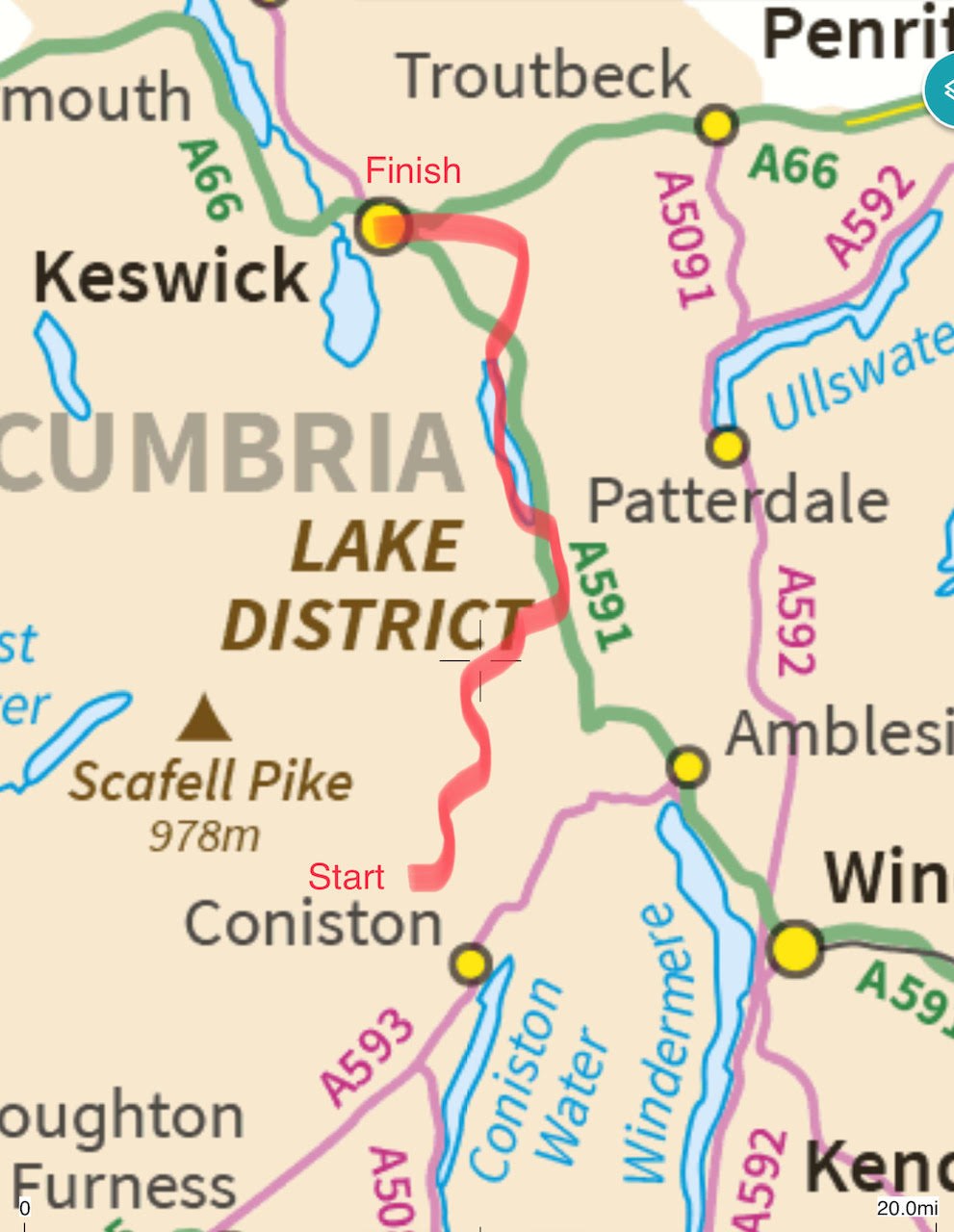
Stage One (Coniston to Tilberthwaite) is the hardest stage and shows 2 alternative routes on this stage (see image below). The black line is a very hard climb up to Hole Rake on a badly eroded path, followed by a long descent with some rough stretches. The alternative is longer, but is on better tracks and avoids any steep off-road climbs. Apparently, the pack horses may well have taken the alternative route in bad weather and as the weather conditions on the day were less than perfect, this is route David and the team followed.
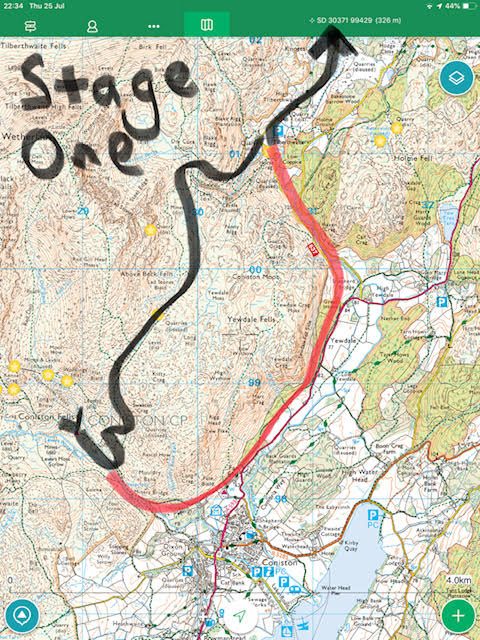
Stage Two (Tilberthwaite to Elterwater) is mostly on good stoney tracks and is where any time lost from stage 1 can be made up.
Stage Three (Elterwater to the foot of Dunmail Raise Via Grasmere) is all on quiet and narrow tarmac lanes. But it is a steep climb over Red Bank and a steep descent to Grasmere.
Stage Four (Over Dunmail Raise to Armboth on Thirlmere) is all on tarmac, initially on a main A Road. But the carriageway is three lanes (two of which go in the direction we are travelling) so there is plenty of room for cars to pass. At the summit of Dunmail Raise the route leaves the main road on to a very well surfaced bridlepath then joins a quiet narrow lane around the side of Thirlmere to Armboth Car Park.
Stage Five (paddling up Thirlmere) is on water. The launching site is easy to access from a car park and the Mountain Trike can get to the water without any steps. The get out point is beside the dam. There are steps up to the road here, but they are wooden and wide / shallow steps.
Stage Six (Thirlmere Dam to Keswick - Forge Lane) is Via St Johns in the Vale. This is all on tarmac and the first half is on B road. The second half is on quiet C roads with just the last few 100 yards on busy A road again. The site of the smelter was reused for industrial purposes throughout the 18th - 20th centuries so very little remains of the original smelter complex.
Following successfully completing this extreme challenge we caught up with David to get his feedback on his latest challenge and most importantly to find out how his Mountain Trike coped. Here is what David had to say,
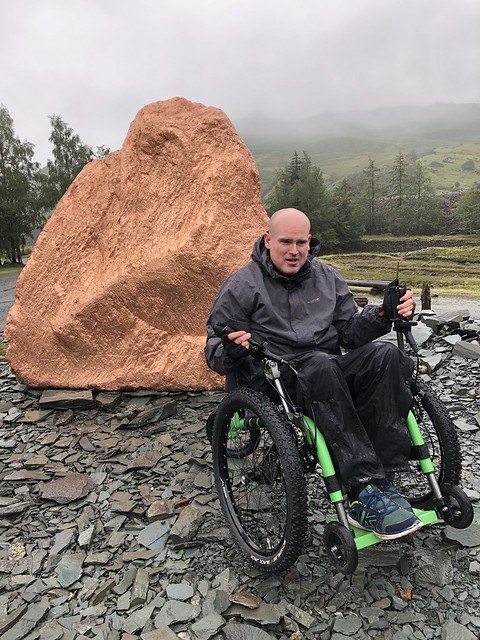
“You might be able to tell that the enormity of the undertaking was beginning to dawn on me, by the expression on my face, in the photos taken in front of the copper leaf coated rock. I was looking forward to taking on the terrain ahead of me, but MND has caused my lung capacity to drop markedly over the last year and the real reason for the troubled expression in these photos was that pushing up onto the mound on which the copper rock was situated, had caused me to get out of breath and I was thinking to myself, this has to improve, because if it doesn’t, we’re in trouble.
Thankfully my breathing did improve over the subsequent 2 hours and in my Mountain Trike we made good time over what was initially fairly gentle undulating terrain.
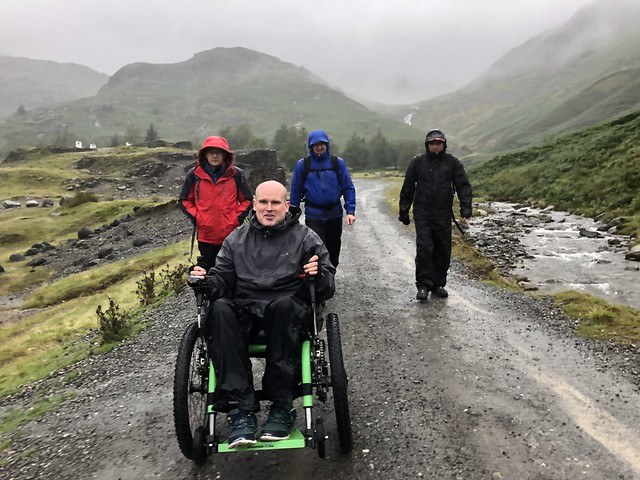
This soon changed though when a steep path became what appeared to be a steep dry-ish stream bed. Totally uneven, littered with large boulders and no clear path through them. Traversing this section required a lot of concentration. The Mountain Trike made easy work of it though. This is easily the trickiest terrain that I’ve attempted on my Mountain Trike and it was evident that it can handle more.
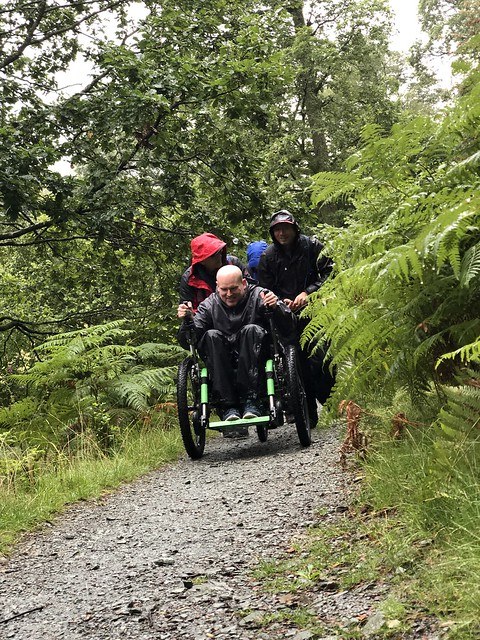
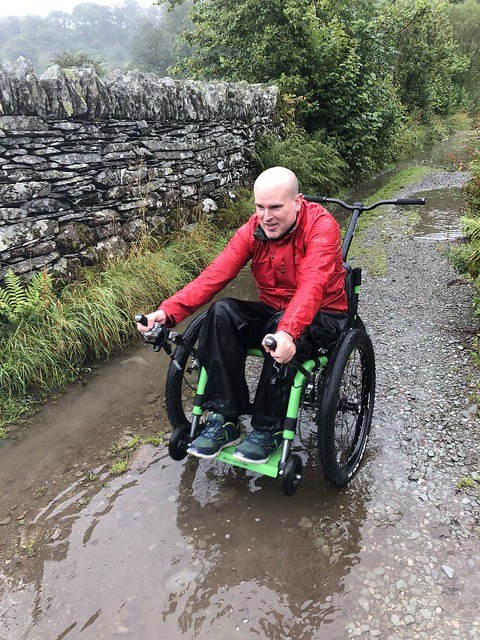
The rest of the route was primarily strength and stamina tests. Some long steep climbs, but on reasonable surfaces. So nothing overly taxing for the Mountain Trike.
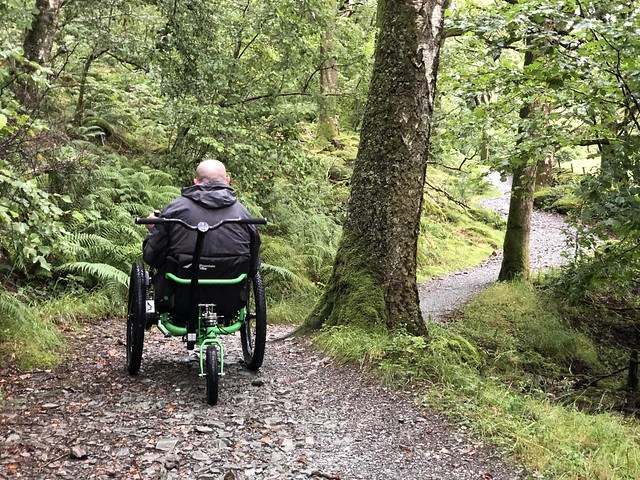
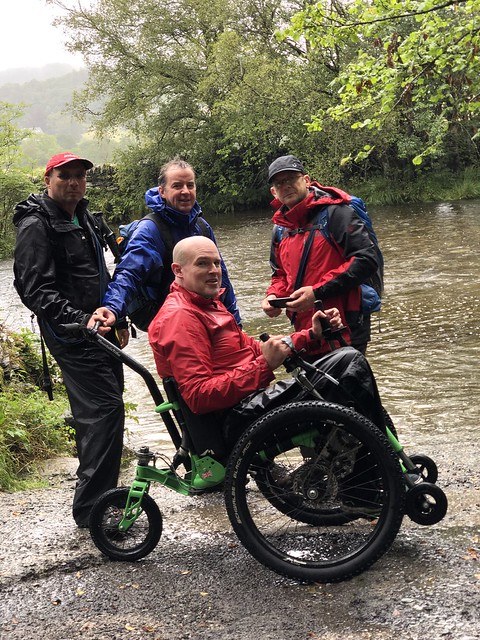
We assigned 2 days to this event, but got well ahead of schedule on day one. Day 2 was over in not much more than 3 hours. Rolling into Keswick just before 1pm.
It was great to be out taking on terrain that the Mountain Trike was designed for. I thoroughly enjoyed the experience. A huge thank you To John, Mark, Martin & Richard. Hopefully it won’t be long before I’m out in my Mountain Trike taking on another challenge.”
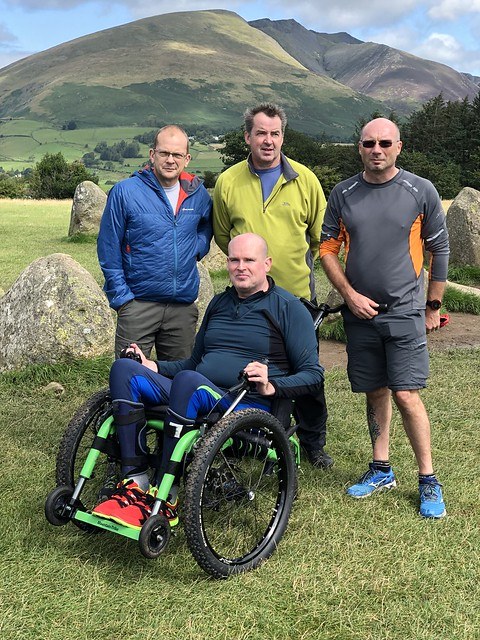
What great feedback - sounded like a real mixture of terrains and sections that really tested David's strength and stamina. Great to hear that the Mountain Trike, once again, enabled David to complete this challenge and to explore this historic trail.
David and his team took on this challenge event in aid of LOROS - a hospice providing invaluable support. More can be found out about this charity and donations can be made via the JustGiving donation page: JustGiving page.
What a wonderful adventure, in a beautiful part of the world.
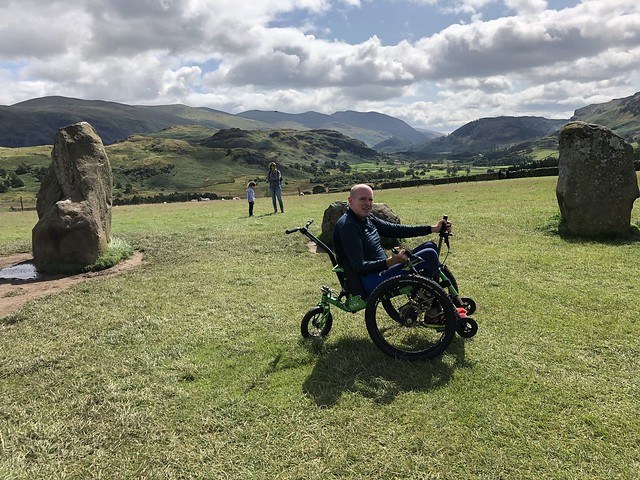
It was great to be out taking on terrain that the Mountain Trike was designed for. This is easily the trickiest terrain that I’ve attempted on my Mountain Trike and it was evident that it can handle more.
We only send out our news and special offers a few times a year via email. Please tick the box below if you are happy to receive information. You can unsubscribe at any time by clicking the link in the footer of our emails. For more information please read our Privacy Policy